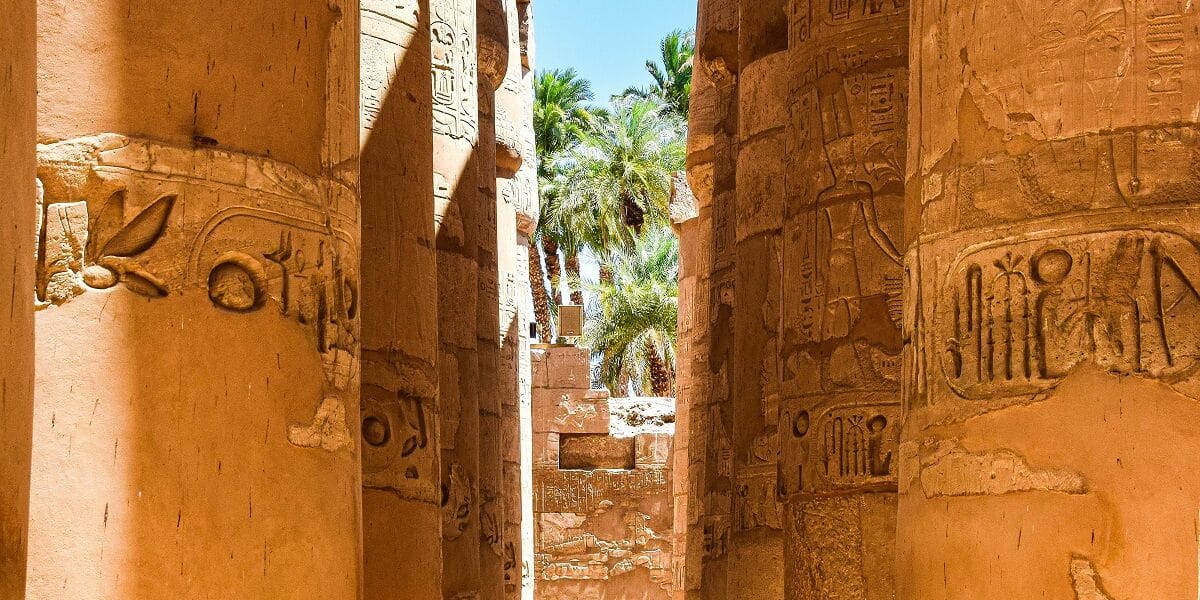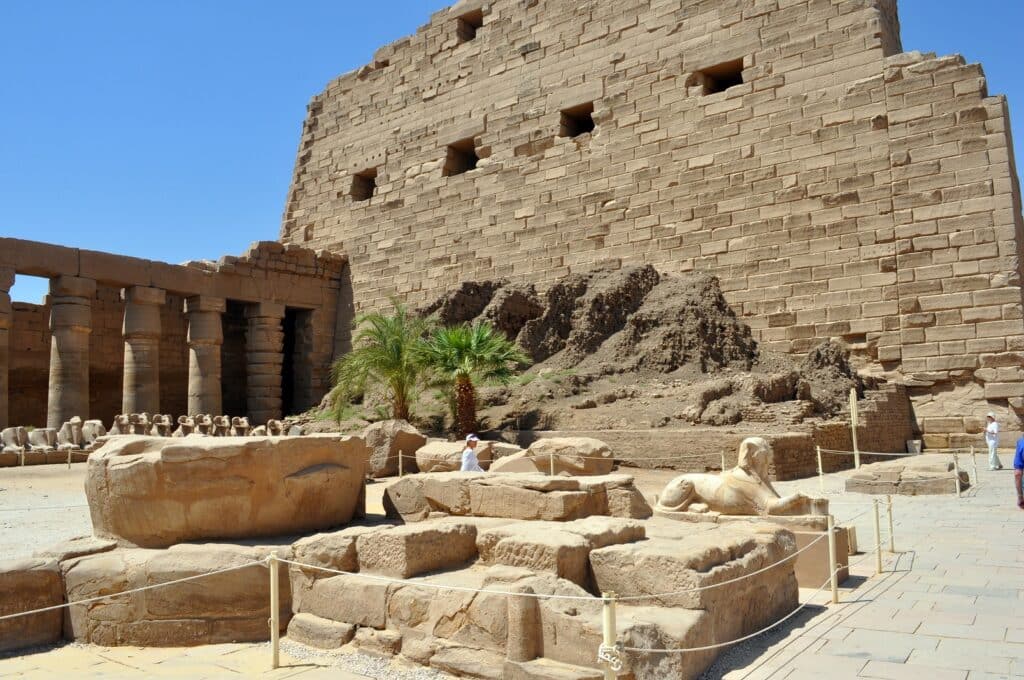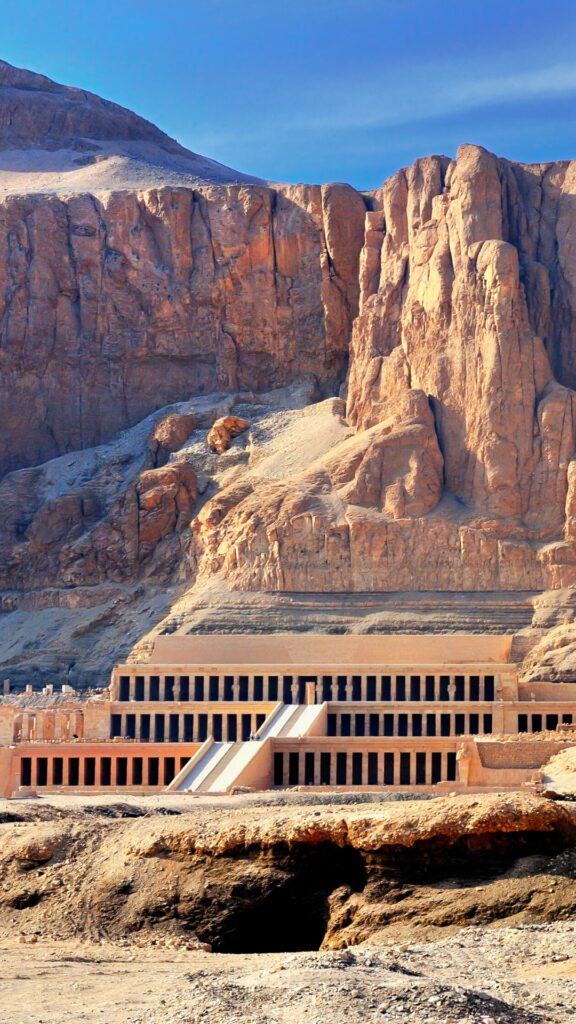

Explore the legendary city of Luxor—the world’s largest open-air museum. Discover the massive Karnak Temple, the secretive Valley of the Kings, and the timeless Nile Cruise experience with My Egypt Travel.
🏛️ Luxor: The Global Capital of Antiquity

Luxor is more than just a city; it is Thebes, the ancient capital of Egypt during the height of the New Kingdom (1550–1070 BCE). Where Cairo offers a blend of epochs, Luxor provides an immersive, concentrated dive into the power, wealth, and spiritual ambition of the Pharaohs. It is universally recognized as the world’s largest open-air museum.
For the American and European traveler, Luxor is the essential archaeological centerpiece of any Egyptian journey. This non-conventional guide, brought to you by My Egypt Travel, is structured around the two pivotal sides of the Nile—the East Bank (The City of the Living) and the West Bank (The City of the Dead)—offering a roadmap to understanding this colossal ancient metropolis.
The Nile Divide: A Non-Conventional Perspective
Luxor’s genius lies in its geography. The Nile River flows directly through the city, perfectly dividing the religious life (East Bank, where the sun rises) from the funerary traditions (West Bank, where the sun sets). Our tours emphasize this spiritual duality, using the Nile itself as the central thread of your historical journey.
I. The East Bank: The City of the Living
The East Bank was the heart of ancient Thebes—home to the temples dedicated to the patron god Amun-Ra and the main city residences.
1. Karnak Temple Complex (The Colossus of Faith)

Karnak is unparalleled in scale. Built, modified, and expanded over 2,000 years by dozens of pharaohs, it is less a single temple and more a colossal complex dedicated primarily to the Theban Triad (Amun, Mut, and Khonsu).
- Architectural Marvel: The highlight is the Great Hypostyle Hall, a forest of 134 towering columns, each intricately carved with reliefs. Walking through this hall is to feel dwarfed by the sheer religious and engineering power of the New Kingdom.
2. Luxor Temple (The City’s Jewel)
Connected to Karnak by the magnificent Avenue of Sphinxes (recently restored and reopened), Luxor Temple is a stunning example of pharaonic architecture built by Amenhotep III and later Rameses II. Unlike other temples, it was not dedicated to a god, but to the rejuvenation of kingship.
- Unique Experience: Luxor Temple is breathtaking at sunset and evening. Lit up after dark, the hieroglyphs and colossal statues take on a warm, mysterious glow, offering a highly romantic and dramatic viewing experience.
3. The Avenue of Sphinxes (The Royal Processional Road)
This meticulously restored 2.7 km path, lined with over a thousand sphinxes and criosphinxes (ram-headed sphinxes), was the ancient route for the annual Opet Festival, where the statues of the gods were paraded from Karnak to Luxor Temple. Walking this Avenue is to literally trace the footsteps of pharaohs and priests.
II. The West Bank: The City of the Dead
The West Bank, bathed in the setting sun, was reserved for royal tombs and mortuary temples—structures built not for the worship of the gods, but for the deceased pharaohs.
4. The Valley of the Kings (KV) (The Royal Necropolis)
This arid, rocky valley holds the subterranean tombs of New Kingdom pharaohs, including Tutankhamun, Seti I, and Ramses VI. The aim was secrecy, not monumentality.
- Non-Conventional Tip: The true marvel is the art. Because the tombs were sealed, the quality of the wall paintings—depicting religious texts like the Book of Gates and the Amduat—is astonishingly vibrant. We guide you to the lesser-visited tombs (beyond the typical three-tomb pass) that offer the finest artistic preservation.
5. The Temple of Hatshepsut (Deir el-Bahari) (The Queen’s Legacy)

Set dramatically against the sheer cliffs of Deir el-Bahari, this terraced mortuary temple built by the female Pharaoh Hatshepsut is a masterpiece of classical architecture, nearly a thousand years before the Greeks.
- Feminine Power: The temple reliefs depict the divine birth of Hatshepsut and her famous expedition to the Land of Punt, emphasizing her unique power and authority in a male-dominated dynasty.
6. The Colossi of Memnon (The Silent Sentinels)
These two massive stone statues of Pharaoh Amenhotep III once guarded the entrance to his now-vanished mortuary temple. Though time has eroded the temple behind them, the colossal scale of the statues serves as a humbling introduction to the West Bank’s grandeur.
III. Beyond the Classics: Hidden Gems of Luxor
To truly offer a non-conventional tour, My Egypt Travel focuses on sites that deepen the understanding of ancient Theban life.
7. The Valley of the Queens (QV)
This smaller valley contains the tombs of the wives and children of the pharaohs. The highlight is the Tomb of Nefertari, widely regarded as the most beautiful tomb in all of Egypt due to the exquisite, perfectly preserved paintings (though often requiring a separate, high-value ticket).
8. The Tombs of the Nobles
Located near the Valley of the Kings, these tombs belong to high officials and scribes. Their significance lies in their artistic content, depicting detailed scenes of daily life—farming, hunting, craftsmanship—offering an invaluable contrast to the royal tombs’ focus on the afterlife.
9. Deir el-Medina (The Workers’ Village)
The best-kept secret of Luxor. This site was the village where the artisans, scribes, and workers who built the tombs in the Valley of the Kings lived. It provides a unique, intimate glimpse into the social life, homes, and private tombs of the ancient Egyptian middle class—a truly non-touristy discovery.
IV. The Nile Connection: Luxury and Relaxation
The River Nile is the lifeblood of Luxor and the primary reason why it is such an attractive destination for European and American luxury travel.
10. The Nile Cruise Experience
Luxor is the main starting or ending point for the classic 5-Star Nile Cruise to Aswan. Sailing between these two capitals is a relaxing, timeless experience that turns transportation into a destination itself.
- Romantic Appeal: Cruising past green fields, farmers working the land as they did thousands of years ago, and watching the sunset over the desert edge is the definition of Egyptian serenity and a strong feature in our Romantic Egypt Escape packages.
11. Hot Air Balloon Ride
For a spectacular, non-conventional view, a Hot Air Balloon ride over the West Bank at dawn offers an unparalleled perspective on the vastness of the Valley of the Kings and the temple complexes below, just as the sun rises over the East Bank.
V. Crafting Your Immersive Luxor Expedition with My Egypt Travel
Luxor’s sheer volume of history can be overwhelming. My Egypt Travel structures your journey to optimize comfort, historical flow, and accessibility.
Logistical Perfection
- Chronological Flow: We arrange visits to follow a logical timeline (starting perhaps at Karnak, moving to the West Bank’s mortuary temples, and ending with the tombs) to make the complex history digestible.
- Private Comfort: Our private, air-conditioned transfers are essential for navigating the long distances between West Bank sites. We also offer Accessible Tour options, ensuring mobility is never a barrier to discovery.
The My Egypt Travel Guarantee
We ensure your Luxor experience is not just a sightseeing trip, but a profound connection with the Pharaonic world. We secure tickets for specific, highly-prized tombs (like Seti I or Nefertari) upon request, elevating your journey far beyond the standard tourist package.
🔑 Conclusion: The Enduring Majesty of Thebes
Luxor stands as the grand finale of ancient Egypt, a testament to a civilization obsessed with eternity. It is the perfect blend of architectural majesty on the East Bank and secretive, colorful art on the West Bank.
Are you ready to witness the unparalleled power of the New Kingdom? Let My Egypt Travel unlock the secrets of Thebes for your ultimate Egyptian expedition.




